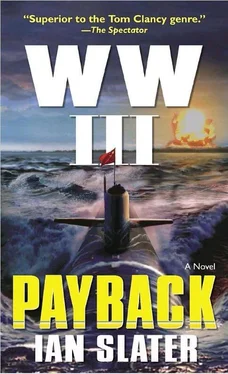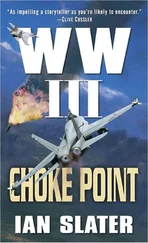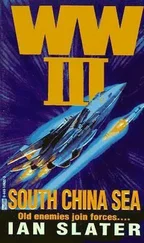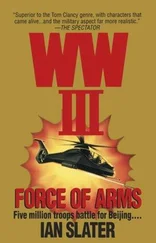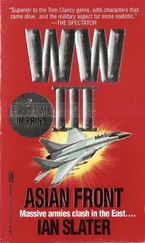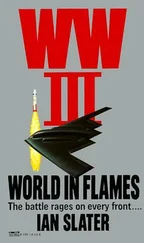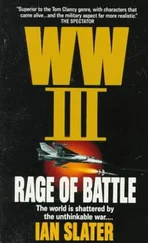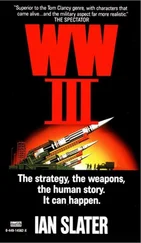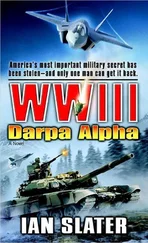NSA did not pick up the signal directly but received it as a “pass-on” from D2, one of the CIA posts on Japan’s central Honshu Island. This request of Rhee’s for twenty-five all-terrain vehicles was in turn rerouted through McCain ’s blue-tiled Signals Exploitation Space to “Alfa Lima Whiskey Alfa Charlie,” the Advanced Littoral Warfare Craft now designated by Special Operations Command as “RS.”
The sea was a vast blackness, and aboard the speeding RS, Douglas Freeman was worried.
He had the kind of feeling students get when they finish an examination question, with five minutes to go till pens down, then suddenly realize in the pit of their gut that they might have entirely misread the question, but know that because of the time factor they’ve now irretrievably committed themselves. In Freeman’s case it was slightly more important than an examination paper; he was carrying the responsibility for seven other lives than his own and taking the risk that if Payback went sour, the United States, already overextended in its World War III commitment against terrorism, might suddenly find itself in a full-blown war with North Korea.
Freeman, both hands on the grips, perspiration beading on his forehead like drops of blood in the redded-out interior of the craft, stared at the point, the apex on the chart, where the adjacent side and hypotenuse of a right-angle triangle met.
“Apex ETA?” he shouted at the RS’s pilot Eddie Mervyn, while trying to retain his usual matter-of-fact tone, evoking calm, giving no hint of the rising panic that attended his thoughts of what might have been a fundamental blunder on his part. What if the warehouse near Kosong had nothing in it but regular military stores? No MANPADs? The chest-tightening sensation that the legendary commander was experiencing was exacerbated by the ear-dunning noise of the RS racing through the juddering surface chop at fifty miles an hour. The corrugated impacts on the foam-cored composite skin as the craft smashed through one wave crest after another rattled even the most securely stowed combat packs against the aluminum ballast tanks and fiber-woven aluminum compressed-air storage flasks, the clatter inside the redded-out craft so loud that anything said below a shout went unheard by pilot Mervyn, copilot Gomez to his right, or by the other five team members.
“One hour, twelve minutes to the apex point, General,” answered Mervyn. The weather was becoming so rough, it would soon be time to dive.
For the first time in years, since Iraq, the general felt a hard, acidic burning sensation in his throat as the bile of a sudden anxiety arrested him. What were the onion smell and the video pictures of the MANPADs’ exhaust trails trying to tell him? Memories of his father telling him ad nauseam, in the way all parents bore their children with repetition, how much he loved the soft, sweet vegetable were haunting him. Why? And what of the videos of the missiles’ exhaust? Why were they bugging him?
The general hated feeling confused, but he was feeling it now. Should he share his concern with the team?
Throughout his career, ever since his first lieutenancy, one lesson had been relentlessly driven home to all those young men and women like him who’d earned their first bar: No officer should ever lead his troops into a foolhardy attack. The concomitant lesson was that no matter how detailed, extensive, and expensive the operation’s preparations had been, no mission should proceed if anything hitherto unknown, either through HUMINT or SIGINT, alerted the officer in command that the situation had significantly changed. Freeman well knew that history was replete with terrible examples of raids and massive offensives that should never have gone ahead. The fact, however, that such missions kept happening was largely due to the failure of leadership nerve, the natural tendency of all leaders at times — from a sporting team’s captain to a general — not to order a halt to a maneuver once it had been set in motion, especially when such an action could be interpreted as cowardice.
Freeman apprised his team of his sense that, for reasons he said he couldn’t articulate beyond a gut feeling, something might be amiss, and that while he couldn’t put his finger on it, it was perhaps, he told the team, a foreboding, a warning.
It was really all he could say. He could hardly tell them that it had to do with onions and videos — they’d wonder if he was cracking under the pressure. Indeed, for a fleeting moment, he dared ask himself the same question.
Despite the ear-dunning noise of the RS’s high-speed planing after he had told the men of his late-hour reservations about the mission, he had the sense of a sudden, prolonged silence in the craft.
In fact, it was only seconds before Aussie answered, “So? We’ll fuckin’ find out. Our job’s to waste the warehouse. No fuckin’ house, no fuckin’ wares. Right? They were NKA MID numbers on those friggin’ launchers.”
“Right!” came a chorus, so thunderous in its intensity that momentarily it drowned out the sound of the maelstrom created by the fastest littoral warfare craft in history.
“All right,” responded Freeman. “We go on as planned.” He turned to Gomez and ordered, “Hard left! Course two seven degrees.”
“Hard left!” confirmed Gomez, moving his control yoke briskly to port, the wedge-shaped craft slowing before making the abrupt turn.
The resulting slosh effect during the turn sent hundreds of gallons of roiling seawater surging over what on the surface was the round, bulbous stern of the surface-planing craft, creating a sudden, gut-dropping sensation in everyone except pilot Eddie Mervyn and his copilot Gomez, who were used to the maneuver from their training runs at Greenport, New York.
“Submerge the boat!” commanded Freeman. “Sixty feet.”
“Submerging the boat,” said Mervyn.
In the thirty-seven seconds that it took for the RS to descend from the noise and fury of the storm-whipped surface to the world beneath, Choir Williams passed from the realm of incipient seasickness to a calm so profound that not even the unending washing-machine pulse of the jet-thrust engine, the hissing of air from the ballast tanks, and other assorted noises, perturbed the SpecFor warrior.
“Sixty feet,” Gomez informed the general.
“Reverse configuration,” Freeman told him.
“Reverse configuration,” confirmed Eddie Mervyn. With that, the Reversible-Submersible underwent its metamorphosis, turning through an arc of 180 degrees, so that what moments before had been its bulbous stern on the surface now served as the craft’s bow, and what had been its six-foot-wide, wedge-shaped, V-hulled bow on the surface now became its stern, thus reducing the drag resistance of water over the sixty-five-foot-long superstructure.
The overall noise level was drastically reduced. Gone was the constant buffeting of wind and wave against a fast surface-planing craft. In their place there was now only the soft winking of red-orange instrument lights, the calming green waterfall of the vertical sonar lines, and the dime-sized blues of the Quad, the four five-foot-long homing torpedoes.
The only other steady electronic sound was the gentle whirr of the VCC’s — Vane Control Computer’s — backup computer. The computers, like their predecessors aboard the inherently unstable Stealth Nighthawk fighters, constantly made nanosecond adjustments, in this case to the RS’s recessed diving planes, stabilizers, and midship canards, without which the revolutionary craft would have been as unmaneuverable and as unstable as a floating bottle.
There was virtually no sense of motion inside the redded-out craft, its forward movement evidenced only by the persistently low throbbing of its jet-pulse-thrust engine, but even this sounded now to Choir not so much like an annoyance but rather the reassuring constancy of a heartbeat.
Читать дальше
